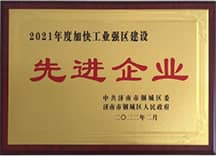Detail and performance characteristics of different construction methods of anti-cracking mortar, bonding mortar and thermal insulation mortar(2)
Bonding mortar
Bonding mortar it is made of cement, quartz sand, polymer binder with a variety of additives by mechanical mixing evenly. Mainly used for bonding insulation board binder, also known as polymer insulation board bonding mortar. The adhesive mortar is made of high quality modified special cement and a variety of polymer materials and fillers by unique technology. It has good water retention and high adhesive strength.
Main features:
One: with the base wall and polystyrene board and other insulation board have strong bonding effect.
Two: and water resistance, freeze-thaw resistance, good aging resistance.
Three: convenient construction, is a very safe and reliable insulation system bonding material.
Four: construction does not slip and fall. It has excellent weather resistance, impact resistance and crack resistance.
Construction method
Base requirements: smooth, solid, dry, clean. The new plaster layer should be hardened and dried for at least 14 days before construction (base flatness is less than 2-5 mm per square meter).
Material preparation: add water according to the proportion of 25-30% of the weight of the material (the amount of added water can be adjusted according to the base and climate conditions), and stir evenly. The mix material should be used up within 2 hours.
The amount of bonded polystyrene board is 4-5 kg a square meter. According to the smooth condition of the wall, the whole surface bonding method or point frame method is used to bond the polystyrene board. A: Whole surface bonding: It is suitable for flat base whose flatness is less than 5 mm per square meter. The adhesive is applied on the insulation board with a serrated plaster knife, and then the insulation board is glued to the wall from bottom to top, the board surface is smooth, and the board seam is pressed without gap. B: Point frame method bonding: suitable for uneven base of less than 10 mm one square meter. Apply the adhesive evenly to the edge of the insulation board with a plaster knife, and then evenly distribute 6 bonding points on the surface of the board. The thickness of the adhesive is determined according to the flatness of the wall. Then stick the plate to the wall as described above.
- Previous : Detail and performance characteristics of different construction methods of anti-cracking mortar, bonding mortar and thermal insulation mortar (1)
- Next : Industry perspective | China cellulose industry association thumb up ETON new material green high quality development "ETON experience"






